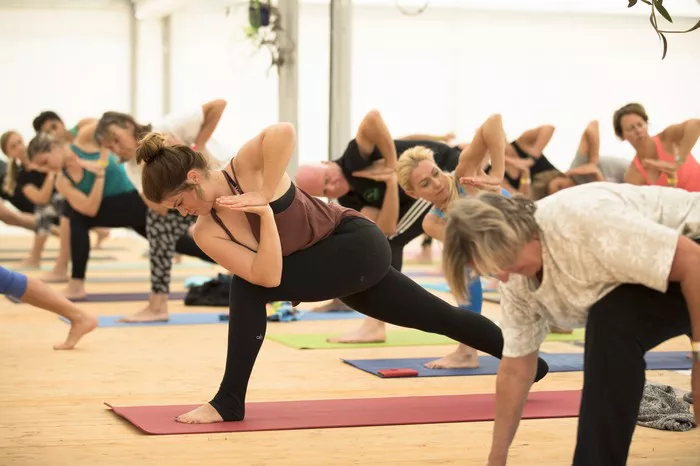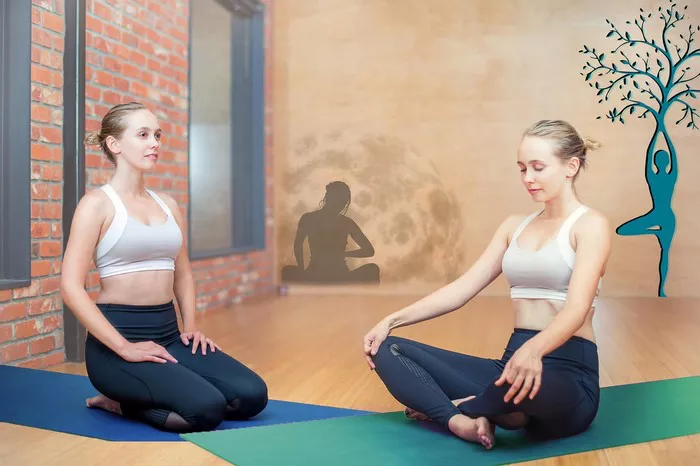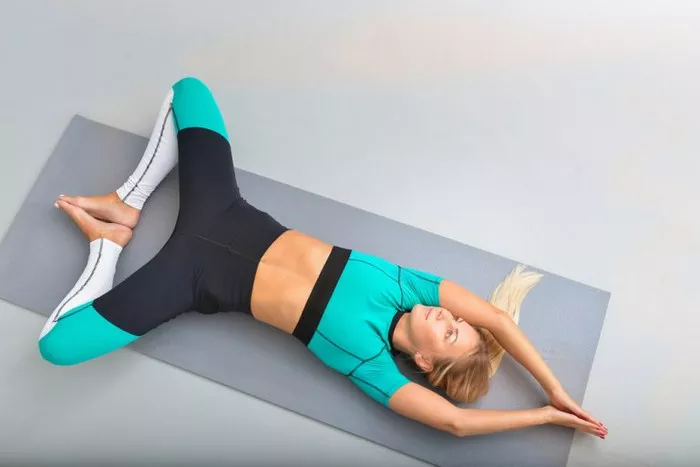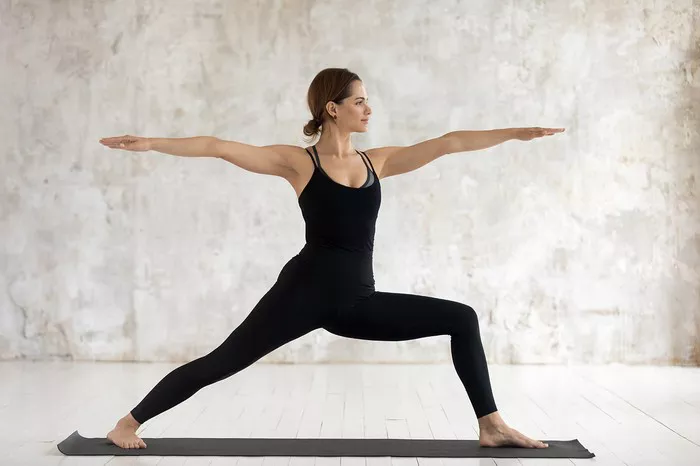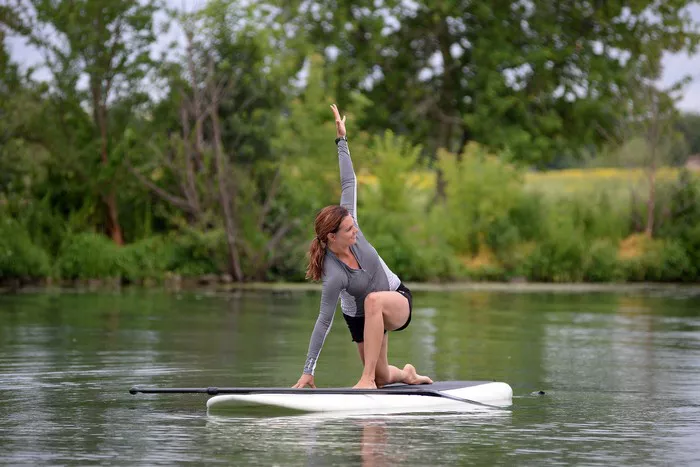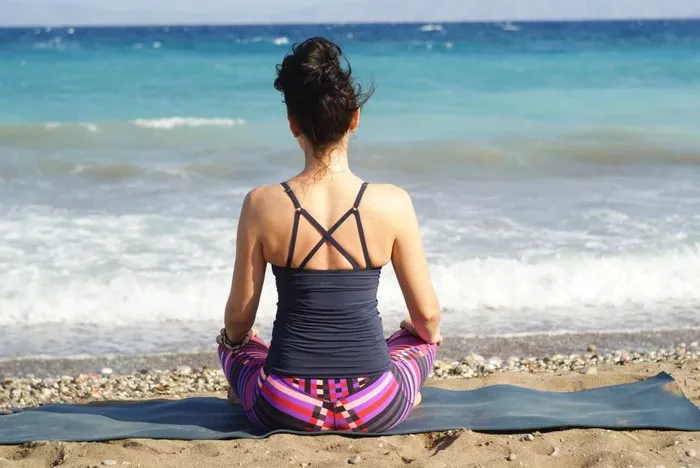The Downward Dog pose, also known as Adho Mukha Svanasana in Sanskrit, is one of the most well-known and fundamental postures in yoga. It is commonly practiced in a variety of yoga styles, from Hatha and Vinyasa to Ashtanga and Power Yoga. For both beginners and seasoned practitioners, Downward Dog serves as a vital component in building strength, flexibility, and overall body awareness. But what exactly is this pose good for, and how does it benefit the body and mind?
In this article, we will explore the numerous physical, mental, and emotional benefits of the Downward Dog pose, and how incorporating it into your yoga routine can enhance your practice and your well-being.
Understanding the Downward Dog Pose
Before delving into its benefits, it’s essential to understand the mechanics of the Downward Dog pose. To get into the position, follow these steps:
- Begin on your hands and knees, with your wrists directly under your shoulders and your knees under your hips.
- Spread your fingers wide to create a stable base and press into the floor.
- Tuck your toes and, on an exhale, lift your hips toward the sky, straightening your legs as much as possible.
- Your body should form an inverted “V” shape, with your head between your arms and your heels reaching towards the floor.
- Keep your gaze directed towards your feet or belly button, depending on your comfort level.
The posture engages the entire body, requiring the use of core muscles, arm strength, and leg flexibility. Now, let’s explore in detail what this pose is good for.
1. Improves Flexibility
One of the most notable benefits of Downward Dog is its ability to improve flexibility. The pose stretches and lengthens multiple areas of the body, including the hamstrings, calves, shoulders, spine, and arms.
Hamstrings and Calves: As you press your heels towards the floor, you get a deep stretch in the back of your legs, particularly in the hamstrings and calves. Many people who experience tightness in these areas will notice significant improvement in flexibility with regular practice of Downward Dog.
Shoulders and Upper Back: The downward angle of the body allows for a stretch across the shoulders and upper back. The pose encourages the opening of the chest, which counteracts the rounded shoulders that many people develop from sitting for long periods.
Spine: The position of the Downward Dog lengthens the spine and relieves tension along the back. By encouraging elongation of the vertebrae, the pose improves spinal mobility and overall posture.
2. Builds Strength
While Downward Dog is often thought of as a stretch, it also serves as a strength-building posture. It engages several muscle groups, making it a full-body exercise. Here’s how it strengthens the body:
Arms and Shoulders: Holding the weight of your body on your hands and arms requires strength in the wrists, forearms, biceps, and shoulders. This is particularly beneficial for people who want to improve upper body strength for other yoga poses, such as Plank or Chaturanga.
Core: To maintain stability and avoid collapsing in the middle of the body, the core muscles (abdominals, obliques, and lower back) must be engaged. Over time, this improves core strength, which is essential for overall balance and posture.
Legs: While the pose may seem focused on the upper body, it also strengthens the legs. The quadriceps, hamstrings, and calves are all activated as you press your heels down and straighten your legs.
Glutes: The glutes work to stabilize the pelvis and maintain the proper alignment of the hips in the pose, making this a great posture for building strength in the lower body.
3. Improves Posture and Alignment
Incorporating Downward Dog into your yoga practice can have a profound impact on your overall posture. As modern lifestyles often involve long hours of sitting at desks or slouching over devices, these habits can lead to poor posture and misalignment in the spine.
The Downward Dog pose helps to reverse the effects of slouching by encouraging spinal elongation and promoting a neutral pelvis. By regularly practicing this posture, you strengthen the muscles that support proper posture, and you become more aware of your body’s alignment throughout the day.
Additionally, the action of pressing the hands into the mat and lifting the hips encourages the chest to open, helping to counteract rounded shoulders. This leads to a more aligned, confident posture that can reduce the risk of back and neck pain.
4. Enhances Circulation and Blood Flow
The Downward Dog pose is a gentle inversion, which means that it encourages the blood to flow in the opposite direction of gravity. In this pose, the heart is higher than the head, which helps to increase circulation throughout the body.
Inversions are known to stimulate the lymphatic system, improve oxygenation of the blood, and promote better circulation in the lower body. As blood flows more freely to the head and brain, this can lead to improved mental clarity and focus.
Moreover, the stretch and engagement of the legs in Downward Dog facilitate better blood flow to the legs and feet, which can reduce the risk of poor circulation, swelling, and varicose veins.
5. Stretches the Spine and Relieves Back Pain
Back pain is one of the most common complaints among adults, particularly those who spend long hours sitting or standing in one position. Downward Dog can be a highly effective remedy for relieving tension in the spine and back muscles.
The posture gently decompresses the spine and helps to realign the vertebrae, which may have been compressed due to poor posture or sitting for long periods. The action of lengthening the spine in this pose creates space between the vertebrae, which can alleviate stiffness and discomfort in the back.
Additionally, the engagement of the core muscles during the pose helps to support and stabilize the spine, reducing the risk of further injury or strain. For those with mild back pain or discomfort, Downward Dog is often recommended as a therapeutic pose to incorporate into a regular yoga routine.
6. Boosts Mental Clarity and Focus
Yoga is known for its ability to connect the body with the mind, and the Downward Dog pose is no exception. As you practice this pose, you are encouraged to focus on your breath, body alignment, and the sensations you feel in your muscles. This mindfulness practice helps to center the mind and calm the nervous system.
By regularly practicing Downward Dog, you improve your ability to focus on the present moment. The pose requires you to balance strength and flexibility, which demands mental concentration and awareness. This enhanced focus can translate to other aspects of life, helping you stay centered and present in daily activities.
Additionally, inversions like Downward Dog can have a mild calming effect on the nervous system, reducing stress and anxiety. The breath-focused nature of yoga practice also stimulates the parasympathetic nervous system, which is responsible for the “rest and digest” response, promoting relaxation and mental clarity.
7. Relieves Stress and Tension
As one of the foundational poses in yoga, Downward Dog plays an essential role in helping to relieve both physical and mental stress. The stretch across the shoulders, back, and legs helps to release built-up tension in the body. For many individuals, stress manifests as tightness in the neck, shoulders, and lower back—areas that are specifically targeted by Downward Dog.
Moreover, the deep, mindful breathing encouraged during this pose helps activate the relaxation response, reducing cortisol levels (the stress hormone) in the body. As a result, you feel a sense of calm and relaxation after holding the pose for a few breaths.
8. Improves Balance and Coordination
While Downward Dog may seem like a static pose, it actually challenges balance and coordination. The body is in a slight inversion, which requires stability and engagement of multiple muscle groups to maintain the proper alignment. The pose strengthens the connection between the mind and body, which is key to developing better overall balance.
The pose also teaches you how to distribute weight evenly across your hands, feet, and core, improving your overall coordination. Over time, this increased body awareness will translate to improved balance in more complex yoga poses and in daily life activities.
9. Stimulates Digestion
Downward Dog can help stimulate digestion by increasing blood flow to the abdomen and promoting the movement of energy throughout the body. The mild inversion encourages the flow of fresh blood to the digestive organs, which can support the body’s natural elimination processes.
In addition, the action of lifting the hips and engaging the core can gently massage the internal organs, encouraging better digestive function. This is especially beneficial for individuals who experience digestive issues, such as bloating, constipation, or indigestion.
10. Promotes Overall Well-Being
Ultimately, the Downward Dog pose contributes to a sense of overall well-being. It is a posture that strengthens the body, relieves stress, increases flexibility, and enhances mental clarity. When practiced regularly, it cultivates a deeper connection between the body and mind, promoting a sense of balance, vitality, and inner peace.
Conclusion
The Downward Dog pose is not just a fundamental part of yoga practice; it is a powerful tool for enhancing physical health, mental clarity, and emotional balance. From improving flexibility and building strength to alleviating stress and promoting better posture, this pose offers a wide array of benefits for practitioners of all levels. By incorporating Downward Dog into your yoga routine, you can experience a more balanced, energized, and centered life.
Whether you’re a beginner or a seasoned practitioner, the Downward Dog pose remains an essential and effective posture to include in your practice. Its versatility and numerous benefits make it a timeless and foundational element of yoga that helps you connect with your body, mind, and spirit.
Related topics

